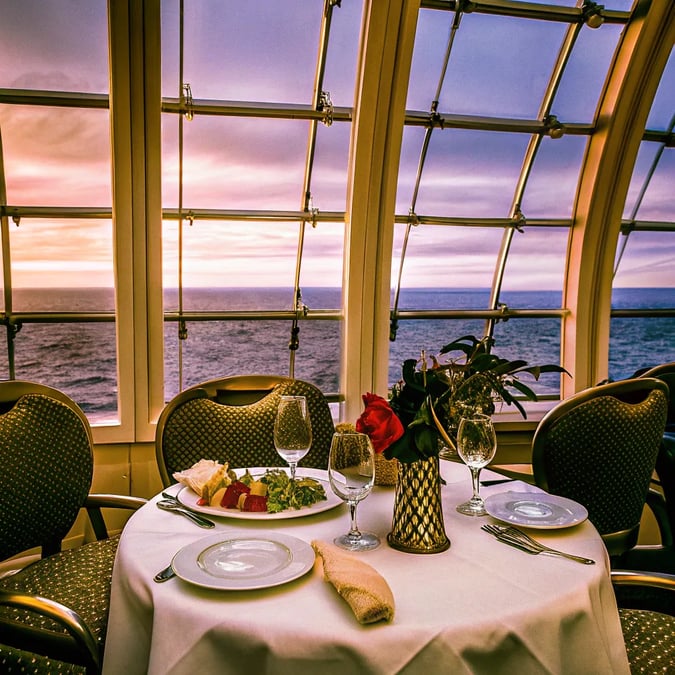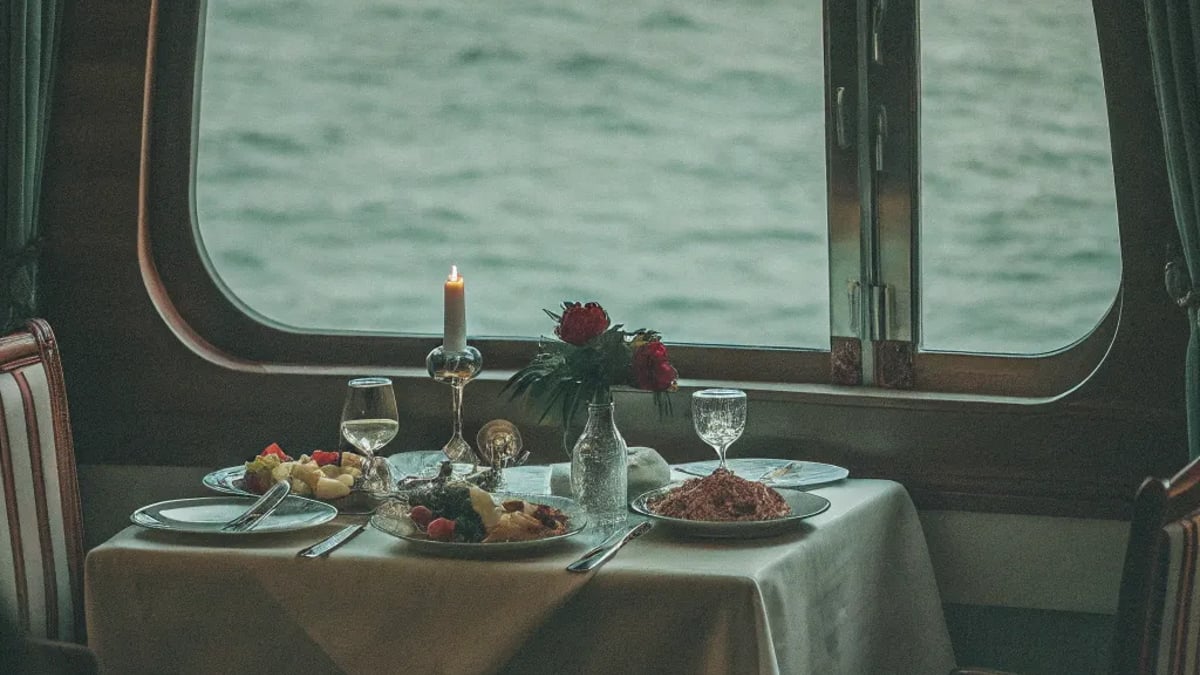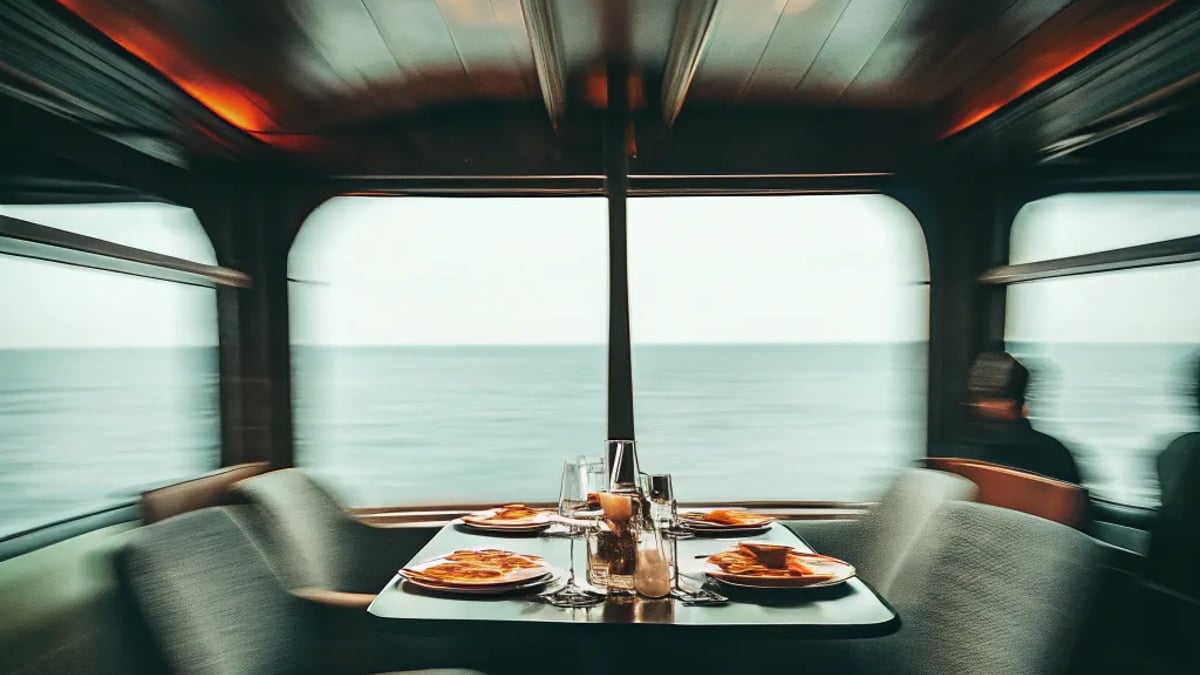
The gentle rocking of a luxury vessel beneath your feet, the salty tang of ocean air mixing with the aroma of truffle-infused delicacies, and the clink of fine crystal as the sun sets over an infinite horizon. Expedition cruising has undergone a remarkable transformation in recent years, blending adventure with uncompromising luxury, particularly in the realm of culinary experiences.
The Evolution of Expedition Cruise Dining
Gone are the days when expedition cruising meant sacrificing comfort for exploration. Today's luxury expedition vessels have revolutionized the concept of dining at sea, creating culinary experiences that rival the world's finest restaurants while navigating some of the planet's most remote regions.
"What we're seeing is a complete reimagining of what's possible in maritime dining," says Chef Thomas Keller, who has collaborated with several luxury cruise lines. "The limitations that once existed on ships have been overcome through innovation and a commitment to excellence."
The modern expedition cruise combines two seemingly contradictory elements: the rugged adventure of exploring untouched destinations and the refined pleasure of world-class dining. This juxtaposition creates a unique experience where guests might spend the morning kayaking alongside glaciers in Antarctica and the evening enjoying a seven-course tasting menu with wine pairings.

From Buffets to Bespoke: The Dining Transformation
Traditional cruise dining once centered around massive buffets and predictable menus. Today's luxury expedition vessels have abandoned this approach entirely, focusing instead on:
- Intimate dining venues with limited seating
- Locally-sourced ingredients from ports of call
- Personalized menus tailored to guest preferences
- Expert sommeliers curating exceptional wine programs
- Interactive culinary experiences and chef's tables
This shift reflects broader trends in luxury travel, where experiences take precedence over mere opulence. The ability to enjoy a perfectly prepared meal while watching whales breach in the distance or viewing the Northern Lights represents a new pinnacle of experiential luxury.
The Culinary Stars of the Seas
Silversea: The Epitome of Ultra-Luxury Dining

Silversea Cruises has positioned itself at the forefront of expedition dining with its "Sea and Land Taste" (S.A.L.T.) program. This innovative culinary concept connects guests deeply with the destinations they visit through food and drink.
The S.A.L.T. Kitchen aboard ships like the Silver Origin (Galápagos) and Silver Endeavour (polar regions) changes its menu daily to reflect the local cuisine of the region being explored. Meanwhile, the S.A.L.T. Lab offers hands-on workshops where passengers learn to prepare regional specialties alongside expert chefs.
Adam Sachs, former editor of Saveur magazine and director of the S.A.L.T. program, explains: "We wanted to create something that goes beyond fine dining. It's about storytelling through food and connecting travelers to destinations in the most fundamental way possible—through taste."
Silversea's commitment to personalization extends to its ability to accommodate virtually any dietary preference or restriction without compromising quality—something particularly challenging on extended expeditions to remote locations.
Regent Seven Seas: Unrivaled Luxury at Sea
Regent Seven Seas Cruises has earned its reputation as "the world's most luxurious cruise line" in part through its exceptional dining program. While primarily focused on luxury rather than expedition cruising, their newest vessels incorporate elements of both worlds.
The cruise line recently announced significant enhancements to its culinary offerings aboard the upcoming Regent Grandeur, introducing:
- New specialty restaurant concepts
- Expanded plant-based menu options
- Enhanced wine programs featuring rare vintages
- Immersive culinary shore excursions
What sets Regent apart is its commitment to variety. Even on extended voyages, guests can enjoy different dining experiences each night, from French haute cuisine at Chartreuse to authentic Italian at Sette Mari.
"We believe that dining is central to the luxury experience," notes Jason Montague, President and CEO of Regent Seven Seas Cruises. "Our guests expect not just quality but variety and authenticity, whether they're sailing the Mediterranean or exploring remote Alaskan fjords."
The Ritz-Carlton Yacht Collection: Bringing Land Luxury to Sea
The entry of The Ritz-Carlton into the luxury cruise market has raised the bar for culinary excellence at sea. The Ritz-Carlton Yacht Collection transfers the impeccable standards of their land-based properties to their vessels, creating a seamless luxury experience.
Their flagship yacht, Evrima, features multiple dining venues designed by acclaimed chef Sven Elverfeld of the three Michelin-starred restaurant Aqua. The main restaurant, Talaat Nam, changes its menu daily, drawing inspiration from the yacht's itinerary.
What makes The Ritz-Carlton's approach unique is their S.E.A. concept (Sea, Earth, Air), which focuses on sustainable sourcing and minimal food miles, even when sailing to remote destinations. The culinary team works with local suppliers at each port to source fresh ingredients, sometimes even accompanying guests to local markets as part of shore excursions.
The intimate size of the yacht (just 149 suites) allows for remarkable personalization. Guests often find their preferences remembered from day one, with the culinary team anticipating needs before they're expressed—a level of service difficult to achieve on larger vessels.
Kontiki Expeditions: Boutique Luxury in Unexpected Places
Sometimes the most extraordinary culinary experiences come from unexpected sources. Kontiki Expeditions, which bills itself as offering "Neo-Luxury Sea Expeditions," exemplifies this with its small yacht (only 18 passengers) exploring Ecuador's little-visited Pacific coast.
Despite its small size, the M.Y. Kontiki Wayra offers remarkable dining experiences centered around Ecuadorian cuisine with international influences. The chef sources ingredients from coastal communities visited during the expedition, creating a direct connection between the dining experience and the journey itself.
A recent review in All Things Cruise noted: "Each meal was a discovery of Ecuadorian flavors, presented with sophistication yet maintaining authenticity. We enjoyed fresh ceviche prepared with fish caught that morning, accompanied by locally-grown produce from coastal farms we had visited just hours earlier."
This approach represents a growing trend in expedition cruising: using cuisine as a lens through which to understand the destination more deeply.
How Do Expedition Ships Maintain 5-Star Dining Standards?
One of the most remarkable aspects of luxury expedition cruising is how these vessels maintain exceptional culinary standards while operating in remote regions. How do they serve fresh oysters in Antarctica or maintain a diverse wine cellar while crossing the Drake Passage?
The answer lies in a combination of technology, logistics, and creativity:
- Advanced provisioning systems that predict needs weeks in advance
- Flash-freezing technology that preserves the integrity of premium ingredients
- Hydroponic gardens on some vessels that grow fresh herbs and microgreens
- Strategic resupply points planned into itineraries
- Relationships with specialty suppliers in remote regions
Viking Cruises, with expedition vessels like the Viking Polaris, has pioneered many of these approaches. Their "thinking kitchen" concept uses AI to help predict ingredient usage and minimize waste—particularly important on longer expeditions where resupply isn't possible.
"The logistical challenges are enormous," admits Executive Chef Anton Egger of Viking. "We might be planning menus for a 30-day expedition months in advance, considering everything from guest preferences to potential weather delays. It's like chess—you're always thinking several moves ahead."
The Chef's Perspective: Creating Culinary Magic at Sea
For chefs accustomed to land-based restaurants, expedition ships present unique challenges and opportunities. Space constraints, ingredient limitations, and the constant motion of the vessel require adaptation and innovation.
Chef Maria Tampakis, who previously worked at Gordon Ramsay's three Michelin-starred restaurant in London before joining a luxury expedition line, shares her perspective: "On land, if I need a specific ingredient, I can have it delivered within hours. At sea, especially in remote regions, you learn to be incredibly resourceful and creative. That constraint actually pushes you to innovate in ways you might not otherwise."
The best expedition ship chefs embrace these constraints, turning them into opportunities for creativity. Unable to receive daily deliveries of fresh produce while exploring Svalbard? They might create a tasting menu showcasing different preservation techniques—salt-curing, pickling, smoking—elevating these methods to an art form.
Sustainability: The New Luxury Imperative
Perhaps the most significant evolution in expedition cruise dining is the focus on sustainability. Operating in pristine environments creates a responsibility to protect them, and culinary programs increasingly reflect this ethos.
Initiatives include:
- Eliminating single-use plastics from all dining operations
- Sourcing from sustainable fisheries and farms
- Reducing food waste through portion control and preservation techniques
- Creating plant-forward menu options that reduce carbon footprint
- Supporting local producers in visited communities
Silversea's S.A.L.T. program exemplifies this approach, working with small-scale producers in visited regions and highlighting traditional foods that have sustained local communities for generations. This not only reduces the environmental impact but creates authentic connections between travelers and destinations.
What's the Most Exclusive Dining Experience at Sea?
For those seeking the ultimate in exclusivity, several expedition vessels offer truly exceptional dining experiences that go beyond their already impressive standard offerings:
The Chef's Table aboard the Silver Endeavour accommodates just eight guests for an intimate multi-course experience with wine pairings selected by the head sommelier. The menu changes based on the expedition location, with themes like "Flavors of the Antarctic Peninsula" featuring ingredients inspired by what early explorers might have encountered.
The Ritz-Carlton Yacht Collection's Talaat Nam offers a private dining room that can be reserved for special occasions. The experience includes a personalized menu consultation with the executive chef and the opportunity to select wines from the yacht's reserve cellar—bottles not typically available by the glass.
Perhaps the most exclusive experience comes from Viking's "Dining Under the Stars" program on their expedition vessels. Available only when weather and itinerary permit, this experience allows just six guests to dine on the ship's bow while in especially scenic locations—imagine enjoying a gourmet meal while surrounded by Antarctic icebergs under the midnight sun.
How to Choose the Right Culinary Expedition Experience
With so many exceptional options, how should discerning travelers choose the right culinary expedition experience? Consider these factors:
Destination and Culinary Focus
Some expedition cruises emphasize regional cuisine connected to the destinations visited, while others focus on international fine dining regardless of location. Consider whether you want your culinary experience to reflect the regions you're exploring or prefer familiar luxury cuisine.
Size Matters
Smaller vessels (under 200 passengers) typically offer more personalized dining experiences but fewer venue options. Larger expedition ships may have more restaurants but less customization. The Silver Endeavour (200 passengers) and Viking Polaris (378 passengers) represent different approaches to this balance.
Dietary Considerations
While all luxury lines accommodate dietary restrictions, some excel at turning these requirements into highlights rather than limitations. Silversea and Regent Seven Seas are particularly noted for their ability to create exceptional experiences for guests with specific dietary needs.
Wine and Beverage Programs
For oenophiles, the quality of a ship's wine program might be paramount. Regent Seven Seas and The Ritz-Carlton Yacht Collection are known for exceptional cellars and sommelier expertise, even in remote regions.
The Future of Expedition Dining
As expedition cruising continues to evolve, what can we expect from the next generation of culinary programs at sea?
Industry experts predict several emerging trends:
- Hyper-local sourcing will intensify, with ships developing relationships with producers in remote regions and potentially even helping to sustain traditional food practices
- Technology integration will enhance personalization, with AI helping to predict guest preferences and optimize provisioning
- Zero-waste initiatives will become standard, with creative reuse of ingredients and byproducts
- Immersive dining experiences that blend entertainment, education, and gastronomy will expand
- Health-focused options will grow beyond current offerings, with personalized nutrition becoming more prominent
"The next frontier isn't just about luxury, but about meaning," suggests food anthropologist Dr. Sarah Jenkins, who consults for several cruise lines. "Travelers want to understand the story behind their food—who grew it, how it connects to the place they're visiting, what cultural significance it holds. Expedition dining is uniquely positioned to deliver this narrative."
Is a Culinary Expedition Cruise Worth the Premium?
Luxury expedition cruises command significant premiums over traditional cruises, with prices often starting at $1,000 per person per day and rising substantially from there. Is the culinary experience alone worth this investment?
For many guests, the answer is a qualified yes. The combination of exceptional dining, remarkable destinations, and the sheer exclusivity creates a value proposition unlike any other travel experience. Where else can you enjoy a meal prepared by a world-class chef while watching polar bears on an ice floe, or sip rare vintage champagne as your ship navigates through a remote Polynesian atoll?
As one recent guest aboard the Silver Endeavour put it: "I've dined at many of the world's top restaurants, but nothing compares to the experience of enjoying that level of cuisine while surrounded by Antarctica's pristine wilderness. It's not just about the food—it's about the context."
For travelers who prioritize culinary experiences and seek adventure without sacrificing comfort, the new generation of luxury expedition cruises offers an unparalleled combination. The world's most remote destinations are now accessible without compromising on life's finer pleasures—perhaps the ultimate luxury of all.
References and Further Reading
For more information on luxury expedition cruising and their culinary programs, visit:
- Silversea Cruises - Explore their S.A.L.T. program and expedition offerings
- Regent Seven Seas Cruises - Learn about their all-inclusive luxury approach
- The Ritz-Carlton Yacht Collection - Discover their unique approach to luxury at sea
- Kontiki Expeditions - Experience their boutique approach to Ecuador's coast
- All Things Cruise - Read reviews and insights on various luxury and expedition options
Whether you're a dedicated food enthusiast or simply appreciate the finer things in life, today's luxury expedition cruises offer culinary journeys as remarkable as the destinations they explore—proving that adventure and indulgence can indeed go hand in hand.
Tags

About Celia Armitage the Author
Celia Armitage is a seasoned travel writer who has embarked on over 50 cruises across the globe, from the majestic fjords of Norway to the vibrant ports of the Caribbean. Her unparalleled knowledge of the cruise industry and keen eye for detail make her an expert guide for travelers seeking unique and immersive shipboard experiences.
Recommended Articles
6 Breakfast Changes Linked to Creatinine Levels in Some Studies
Discover six breakfast changes that may help manage creatinine levels and support kidney health through informed dietary choices.
2026 Ford Everest: Built for Drivers Who Crave Capability
Explore the 2026 Ford Everest, an SUV built for adventure with exceptional performance, modern technology, and a spacious interior for all travelers.
The Best Shampoos and Treatments for Psoriasis Scalp Relief
Discover the best shampoos and treatments for scalp psoriasis relief, including key ingredients and expert advice for symptom management.
The Coach Bag Women Over 50 Are Obsessed With
Discover why women over 50 are obsessed with Coach bags, emphasizing timeless style, practicality, and the resurgence of luxury fashion.
What Solo Travelers Over 50 Say They Wish They Knew Earlier
Discover what solo travelers over 50 wish they knew earlier about safety, packing, flexibility, and connecting with locals while traveling solo.




